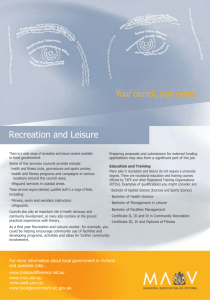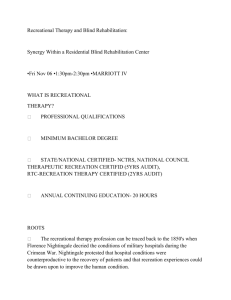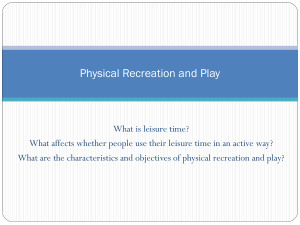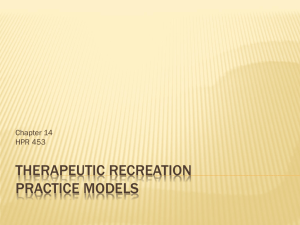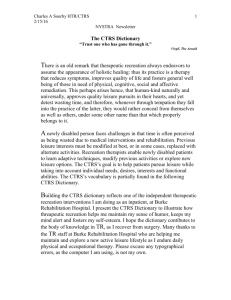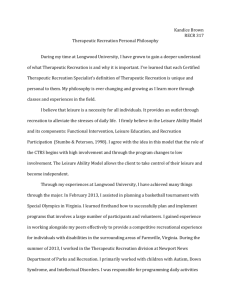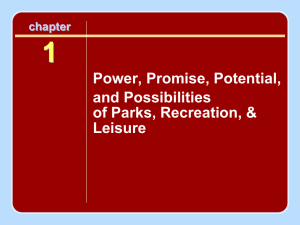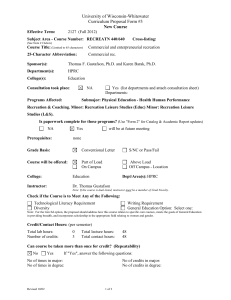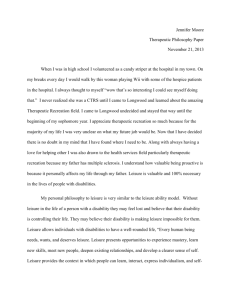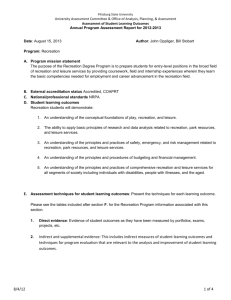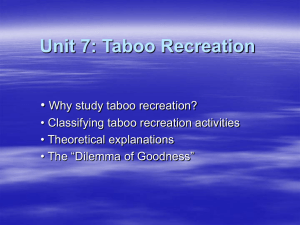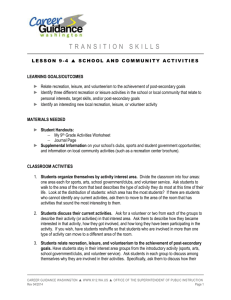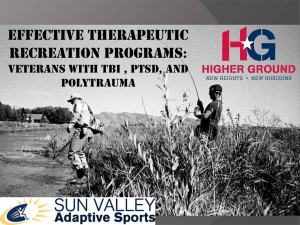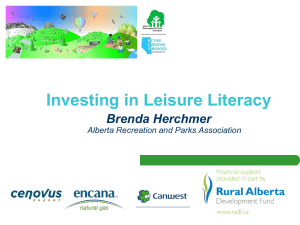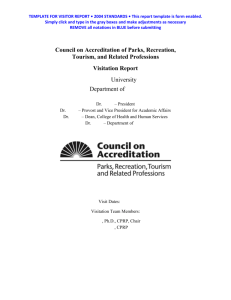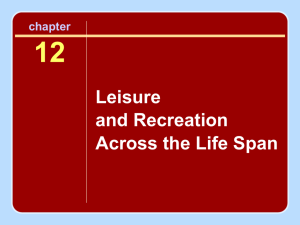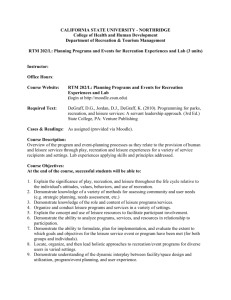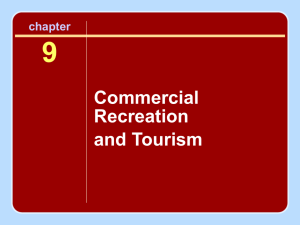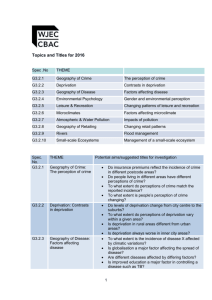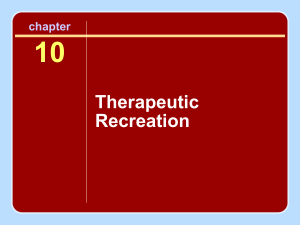Recreation Therapy:
advertisement
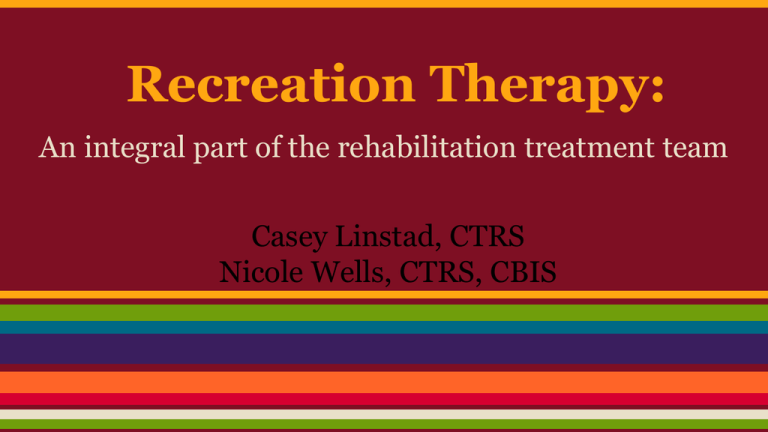
Recreation Therapy: An integral part of the rehabilitation treatment team Casey Linstad, CTRS Nicole Wells, CTRS, CBIS Rec Therapy Name: First Name A=Astrology B= Basketball C=Cooking D=Daydreaming E=Exercise F=Fishing G=Golf H=Hiking I=Indoor Gardening J=Jazzercise K=Knitting L=Lego M=Meditation N=Nail Art O=Origami P=Photography Q=Quilting R=Reading S=Self-Defense T=Taxidermy U=Ultimate Frisbee V=Volunteer W= Writing Y=Yoga Z=Zumba Rec Therapy Name: Last Name A=Afficionado B= Beginner C=Competitor D=Dark Horse E=Entrant F=Fan G=Gamer H=Hipster I=Infuser J=Jock K=Knight L=Leader M=Master N=Novice O=Original P=Player Q=Quizzer R=Rookie S=Superstar T=Team player U=Uniter V=Vessel W= Warrior Y=Yeller Z=Zapper Session Objectives 1. To educate on the importance of Recreation Therapy, especially in a brain injury rehabilitation setting. 2. To inspire health care professionals with evidencebased recreation interventions used for persons with brain injury. 3. To integrate Recreation Therapy into more brain injury rehabilitation programs. Recreation as Therapy? “While (RT) has much to offer...its specific contribution lies in the area of leisure functioning. Because leisure is such an integral part of most peoples lives, it is seen as vitally important to individuals overall quality of life and life satisfaction”. (Peterson, 2000) • • • • Quality of Life Simply increasing the variety and frequency of social and leisure activities may not increase SQOL Increase opportunities for participation with others Enhance subjective experience of social and leisure activities Specific to patients with TBI; social support network, redefining oneself though new roles, and participating in fulfilling and meaningful activities What does this mean for RT? “Providing the right patient with the right service (at) the right time in the right setting at the right intensity and for the right duration”. (Navar, 1991) Accountability via the Leisure Ability Model • Functional Intervention o Baseline abilities that are prerequisite to typical leisure behavior hand-eye coordination, endurance, strength, memory, attention, orientation, expression Leisure Education • o Development of leisure-related skills, attitudes and knowledge leisure awareness, social interaction skills, leisure activity skills and leisure resources Recreation Participation • o An expression of one’s leisure lifestyle opportunities for fun, enjoyment and self-expression within an organized delivery system leagues, tournaments, arts and crafts, music, fitness classes, park or pool (Peterson, 2000) APIE • Assess • Plan • Intervention • Evaluate Assessment Paper assessment Get to know WHOLE person Interview family and friends as well All Together Now! Interdisciplinary Goal: Ambulation PT OT, SLP, Nursing, Psychology, Social Work, Nutrition, RT, others... • A Fishy Story… Individual TR Goals Modifying favorite activities: Physical modifications Modification devices Finding a similar activity with the same benefits • • • Research Research Done before? Protocol/Procedures Outcomes Never enough research per intervention Intervention Evaluation Outcomes Documentation Debrief Session Objectives 1. To educate on the importance of Recreation Therapy, especially in a brain injury rehabilitation setting. 2. To inspire health care professionals with evidencebased recreation interventions used for persons with brain injury. 3. To integrate Recreation Therapy into more brain injury rehabilitation programs. References Navar, N. (1991). Advancing therapeutic recreation through quality assurance: A perspective on the changing nature of quality in therapeutic recreation. In B.Riley (Ed.), Quality management: Applications for therapeutic recreation (pp. 3-20). State College, PA: Venture Publishing Company. Peterson, Carol Ann, and Norma J. Stumbo. Therapeutic Recreation Program Design: Principles and Procedures. Boston: Allyn and Bacon, 2000. Print. McLean, A.M.. (2013). Associations between social participation and subjective quality of life for adults with moderate to severe traumatic brain injury. Disability and Rehabilitation, Early Online, 1-10. doi:10.3109/09638288.2013.834986
